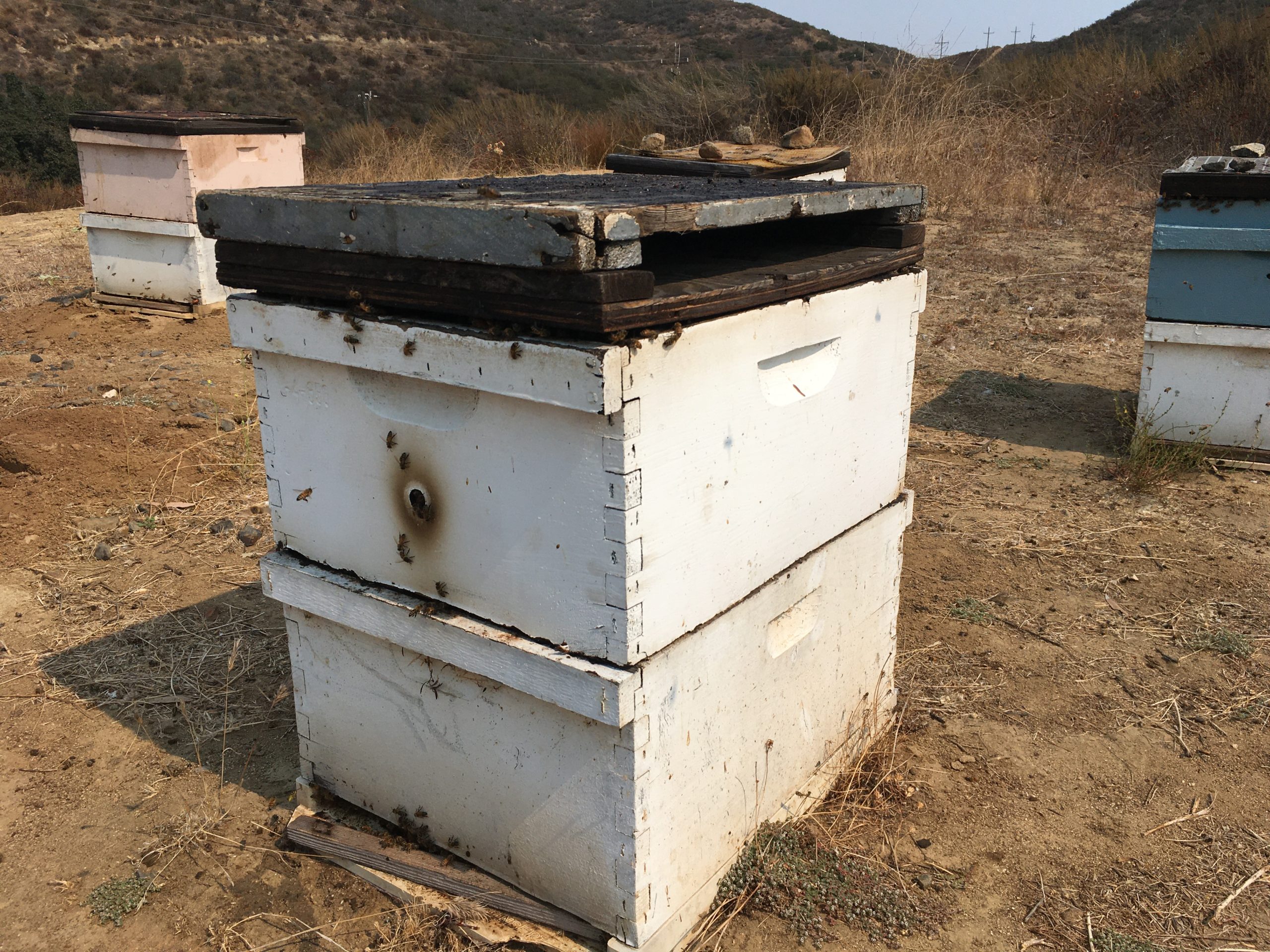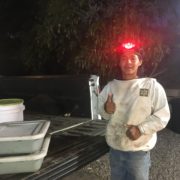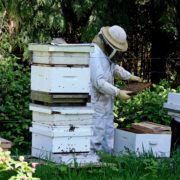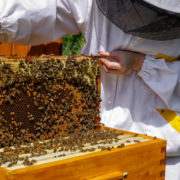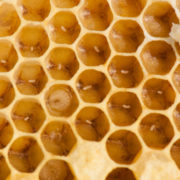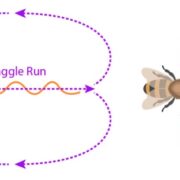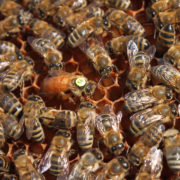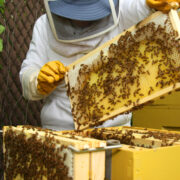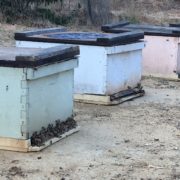Protecting Beehives From Extreme Heat
Bees are surprisingly adaptable to most weather events. They know how to stay dry during rainstorms, stay cool during summer heat, and even survive the most brutal of winters, such as those in Russia and Canada. However, when the weather becomes dangerously extreme, bees – like all living creatures – can be challenged to survive.
Recently, Wildflower Meadows’ experienced a powerful heatwave that affected most of our apiaries. The temperatures in many of our apiaries surpassed 105 degrees. Yet our bees survived. How were they able to do this?
The answer is simple: shade and nearby water. Our beekeepers were concerned about the safety of the colonies heading into the weekend, because bees can’t really survive extended periods of extreme heat without the benefits of shade and close water. The bees need shade during times of extreme heat, because the sun beating down on the lid of a hive can heat the upper portion of a beehive to dangerous and possibly lethal levels – in some cases even above the melting point of beeswax! We all know that bees also need a reliable water source; but more importantly during extreme heat, they need their water source to be nearby. When the temperatures reach near 110 degrees, bees generally stop flying. Only a few brave foragers will dare to head out for water in that kind of heat, and they won’t be able to fly far. If the water supply is too far away from the hive, the bees will not be able to access the water that they so desperately need in order to survive.
Fortunately, our bees were able to survive the heat because we took precautions to protect them before heading into the weekend. As the majority of our apiaries are out in the open and have no shade, we provided makeshift shade to each and every colony by placing a second lid over the first. This setup not only provided shade, but also produced relatively cooler airspace over the colony, significantly reducing the risk of overheating. And, it worked!
If you are trying to shade your bees and don’t have extra lids, any piece of plywood will do. Some of our commercial beekeeper friends whose bees are on pallets often place empty pallets over their bees to provide the same effect.
The second precaution is for you to be sure – absolutely sure – that your bees have access to plenty of fresh water, as close to the apiary as possible. You also need to keep your eye on the water level, because when the temperatures rise, the bees will consume a lot of water. The colonies in our queen rearing yard went through nearly 70 gallons of water in just two days! That is a lot of water for bees, but it saved their lives.
And finally, if you are fortunate enough to have running water and a hose nearby, the bees always appreciate a cool shower or two. The benefits are twofold, because the water not only cools the hive, but then the bees can later drink up the drips without having to fly far.


